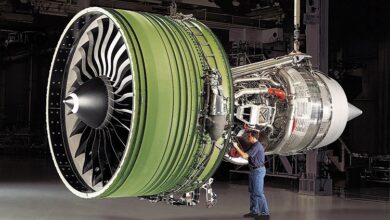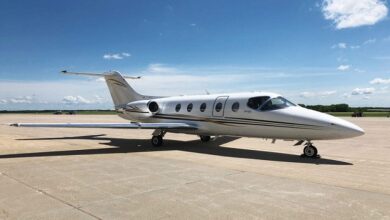Capture the Perfect Motion: Camera Settings for Moving Car Photography
Camera Settings for Moving Car Photography
Freezing a speeding car in a sharp, dynamic image is a dream for many car enthusiasts and photographers. Capturing the essence of motion and power with the right camera settings for moving car photography can elevate your photos from snapshots to stunning works of art. This article will guide you through the essential camera settings and techniques to achieve those perfect rolling shots.
The Crucial Element: Shutter Speed
The most critical element in camera settings for moving car photography is shutter speed. A slow shutter speed allows more light to reach the sensor, but it also blurs the moving subject. To freeze the car’s motion and create a sharp image, you’ll need a fast shutter speed.
Starting Point: A good starting point for shutter speed in moving car photography is 1/250th of a second. This speed will typically freeze the car’s movement and provide a clear image. However, it’s not a one-size-fits-all solution.
Adjusting for Light and Speed: In bright daylight, you can push the shutter speed even faster, like 1/1000th of a second or higher. This will capture even finer details and create a sharper sense of motion blur in the background. Conversely, in low-light conditions, you might need to slow down the shutter speed to 1/125th of a second or even slower. However, be prepared for a slight blur in the car itself, especially if the car is moving very fast.
Experiment and Refine: Ultimately, the ideal shutter speed depends on the specific situation. Experiment with different speeds to find the sweet spot that balances sharpness with the desired amount of motion blur in the background.
Aperture: Balancing Light and Depth of Field
Aperture, another crucial element in camera settings for moving car photography, controls the amount of light reaching the sensor and the depth of field. A wider aperture (lower f-number) lets in more light, which can be helpful in low-light conditions. However, it also creates a shallower depth of field, which means only a small part of the image will be in focus.
Prioritizing Sharpness: For moving car photography, where sharpness is paramount, a narrower aperture (higher f-number) is generally preferred. This ensures that both the car and the background are in focus. A good starting point is f/8 or even higher.
Creative Effects: If you want to isolate the car from the background and create a more artistic effect, you can experiment with a wider aperture. However, ensure you have a fast enough shutter speed to compensate for the reduced depth of field and avoid blurry car details.
ISO: Finding the Balance Between Light and Noise
ISO controls the sensor’s sensitivity to light. A higher ISO allows you to shoot in low-light conditions without needing a very slow shutter speed. However, higher ISO also introduces image noise, which can detract from the photo’s quality.
Finding the Right Balance: In most cases, you’ll want to keep the ISO as low as possible for moving car photography to maintain clean, sharp images. However, if the lighting is poor and a faster shutter speed isn’t feasible, a slight increase in ISO might be necessary. The key is to find the balance between acceptable noise levels and a properly exposed image.
MotorCut Presets: A Helping Hand
For those new to camera settings for moving car photography, consider using presets specifically designed for this type of photography. MotorCut, a leading software company specializing in car photography, offers a range of presets that can help you achieve professional-looking results quickly and easily. These presets adjust various camera settings, including shutter speed, aperture, and white balance, to provide a solid foundation for capturing stunning moving car photos.
Additional Techniques for Success
Beyond camera settings for moving car photography, here are some additional tips to improve your results:
- Panning: When shooting a moving car, pan your camera smoothly alongside it to keep it sharp while blurring the background. This technique creates a dynamic sense of motion in the final image.
- Focus Tracking: Many cameras have autofocus tracking features that can help you maintain focus on the moving car. This can be extremely helpful, especially when shooting with a shallow depth of field.
- Burst Mode: Use your camera’s burst mode to capture multiple frames in rapid succession. This increases your chances of getting a perfectly sharp image, especially if you’re still mastering the panning technique.
Conclusion
Mastering camera settings for moving car photography takes practice and experimentation. Don’t be afraid to try different settings and techniques to find what works best for you and the specific situation. Remember, the perfect shot often lies in the subtle adjustments you make based on lighting, car speed, and your desired creative effect.
FAQ on Moving Car Photography
Q: What camera gear do I need for moving car photography?
A high-quality camera with manual controls is ideal for moving car photography, allowing you to adjust camera settings for moving car photography effectively. While a full-frame camera offers more low-light performance, a good APS-C camera with a fast lens can also achieve fantastic results.
Q: Is there a specific lens suitable for moving car photography?
A fast telephoto lens (ideally with a focal length of 70mm or above and a wide maximum aperture like f/2.8) is well-suited for moving car photography. This combination allows you to zoom in on the car and achieve a pleasing background blur, while also letting in enough light for faster shutter speeds.
Q: Can I use autofocus for moving car photography?
Absolutely! Many cameras have excellent autofocus tracking features that can lock onto a moving car and maintain sharp focus. This is especially helpful when using a shallow depth of field.
Q: Are there any safety precautions to consider when shooting moving car photography?
Safety is paramount. Never stand on the road or in close proximity to moving traffic. Look for safe shooting locations like sidewalks or overpasses, and prioritize your safety over the perfect shot.
Q: Are MotorCut presets helpful for beginners?
MotorCut presets can be a valuable tool for beginners in moving car photography. These presets provide a starting point with optimized camera settings for moving car photography, allowing you to focus on composition and technique while achieving professional-looking results. Remember, presets are a foundation, and you can always fine-tune the settings based on your specific needs.



